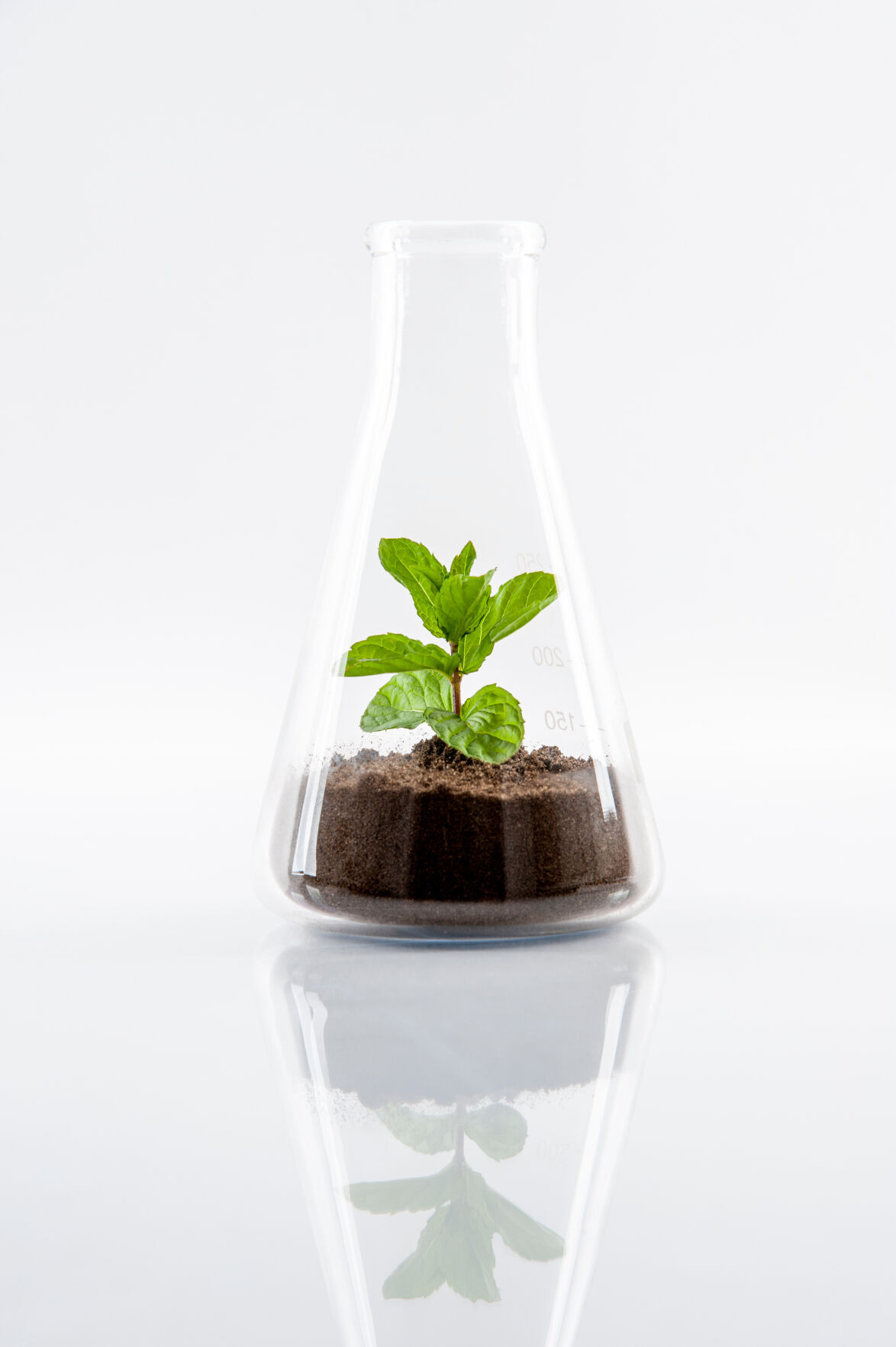According to the book of Genesis, on the third day, God created dry land, seas, plants and trees. This also must have been the first day the nitrogen cycle began circulating the nitrogen that all living things require.
One step in the cycle is called nitrogen assimilation, which is when plants and animals incorporate the nitrate and ammonia formed through nitrogen fixation and nitrification. Plants take up these forms of nitrogen through their roots and incorporate them into plant proteins and nucleic acids. The proteins that regulate nitrogen assimilation have been somewhat of a mystery since it started on the third day, until a research team in Japan made a crucial discovery of the protein that hinders the development of organic nitrogen compounds in plants. If altered, plant growth could be boosted.
The group consisted of five people—a graduate student, an assistant professor, one visiting professor, and two professors—and was led by Sousuke Imamura of the Institute of Innovative Research at Tokyo Institute of Technology. Imamura said the team has been studying nitrogen sensing mechanisms in plants for over 10 years. In 2009, they pinpointed the central nitrogen player, CmMYB1, under nitrogen depletion in unicellular red alga.
“The finding was the first case in plant lineages,” Imamura said. “After that, we were trying to figure out how CmMYB1 is regulated in response to nitrogen depletion; however, it was extremely difficult to get a hint to reveal the regulation.”
There are several proteins involved with nitrogen assimilation, but the expression of the proteins is increased with lower levels of ammonium and nitrate ions in the environment. Imamura’s research team drew a conclusion that there must be a negative regulator that comes into play in these soil and water conditions. The researchers made a major development in 2020 when they identified CmNDB1, a CmMYB1-binding protein. Their findings show CmNDB1 disables and traps CmMYB1 in the cytoplasm and stops it from operating as a transcription factor. CmNDB1 only governs nitrogen assimilation in certain nitrogen environments.
“This means that disrupting CmNDB1 could turn these genes ‘ON’ even under nitrogen-sufficient conditions, which could benefit the plant cell growth since we can enhance the nitrogen assimilation pathway even under +N conditions,” Imamura said. “Nitrogen assimilation is one of the rate-limiting steps for cell growth, that is why farmers utilize a lot of fertilizers.”
When nitrogen is prevalent, CmMYB1 is controlled by CmNDB1, which inhibits the nuclear translocation of CmMYB1, suppressing nitrogen assimilation.
“The nitrogen assimilation pathways and contributing enzymes to the pathways are well conserved in plant lineages,” Imamura said. “And, after the nitrogen depletion conditions, the reaction of nitrogen assimilation is usually upregulated to try to uptake nitrogen sources from the environment.”
What are the possibilities for agriculture?
So far Imamura’s team has only found the protein for unicellular red alga, which has an extremely simple cellular structure. He said more complex the species, such as agricultural food crops, can be examined in the future. Imamura said as of right now the research shows CmNDB1 is not conserved in higher plants like rice and wheat. However, the situation will be drastically changed if the CmNDB1-type protein is found in higher plants.
“It may be difficult to work with those plants which do not contain proteins homologous to CmNDB1,” Imamura said. “However, we assume that a CmNDB1-like protein that possesses the same functions as CmNDB1 will work in higher plants, and finding the protein is an important future subject to be solved to increase and improve the biomass productivity of crop plants. In that case, seed companies will be able to incorporate it into their seed breeding programs. Also, we believe that we could reduce the demand for fertilizers for crop production if we can find the CmNDB1-type of protein in higher plants.”
Additionally, Imamura said this is the first case showing a protein negatively affecting the transcription of nitrate assimilation genes by repressing the activity of nitrogen depletion responsive transcription factor under the normal growth conditions, so there is much to be learned in the laboratory.
“At the same time, this research gives the first evidence supporting the theory that nitrogen assimilation is actually inhibited under the normal growth condition,” he said. “We believe that the CmNDB1-CmMYB1-like regulation unit could be conserved in other algae and plants.”
The future is wide-open for this nitrogen assimilation research and the range of knowledge that could be gained in the future is limitless, the researchers said.
“We are now planning to investigate deeply into the function of CmNDB1,” Imamura said. “We have made a hypothesis that CmNDB1 not only functions as a negative regulator to nitrate assimilation genes but also to other genes. We hope to make this point clear by using several biochemical molecular biology techniques in the future.”
According to the U.S. Department of Agriculture, urea has increased 149%, liquid nitrogen has gone up 192% and anhydrous ammonia has shot up an incredible 235% since last year. With the shortages of fertilizer currently impacting the world, being able to incorporate increased nitrogen uptake in a seed could be a Godsend.
Lacey Vilhauer can be reached at 620-227-1892 or [email protected].
Sign up for HPJ Insights
Our weekly newsletter delivers the latest news straight to your inbox including breaking news, our exclusive columns and much more.



